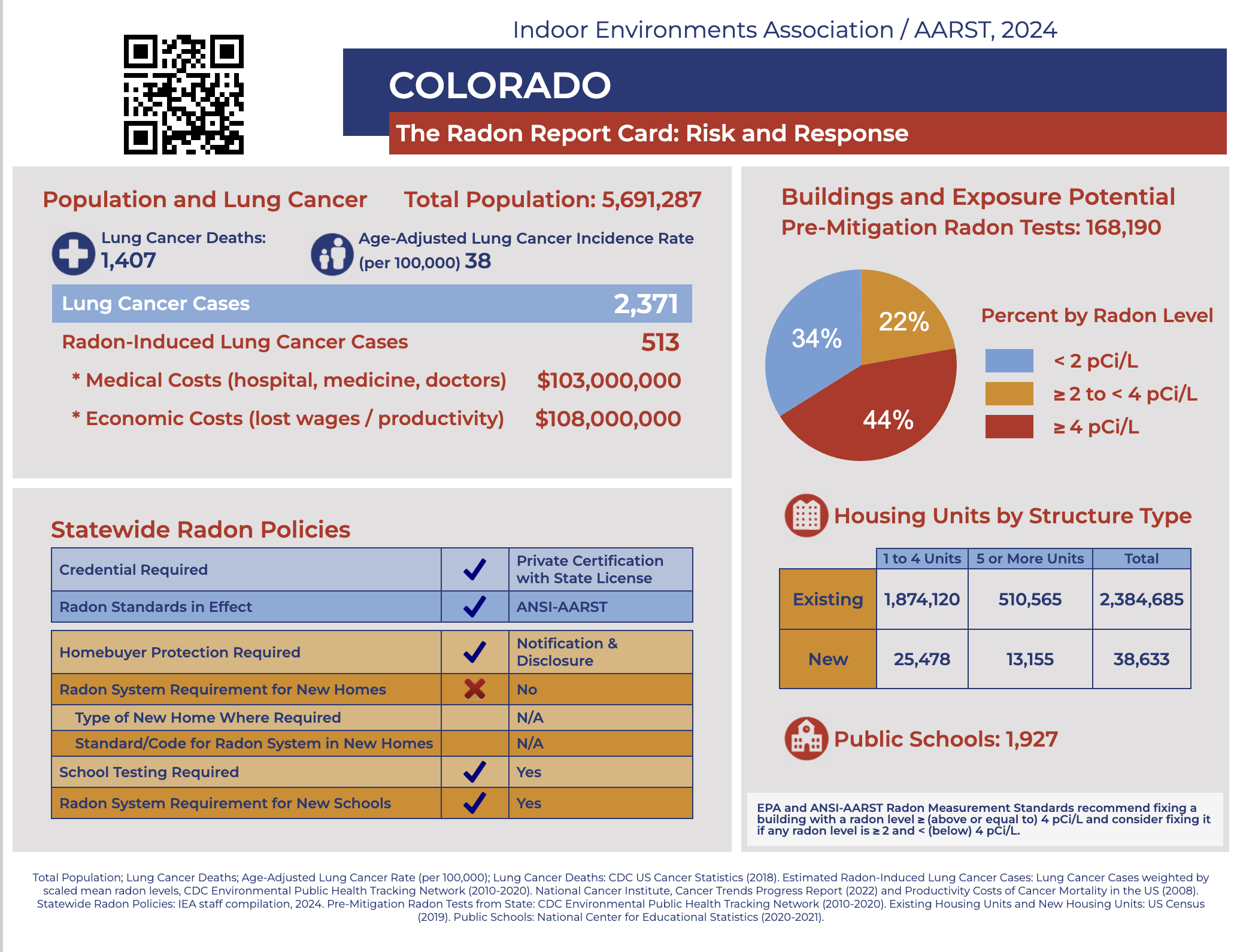
Radon in Colorado
Radon in Colorado
What You Need to Know to Protect Your Home

In Colorado, radon is a significant concern for homeowners due to the state’s unique geological conditions. Colorado is ranked #9 in the United States with some of the highest radon levels. This invisible, odorless gas can pose serious health risks if not properly managed. The average radon level in Colorado is 6.4 pCi/L, which is similar to having 200 chest x-rays each year. Radon is the leading cause of lung cancer deaths among non-smokers in the U.S. and is responsible for more than 500 deaths in Colorado each year. In this blog post, we'll explore why radon levels are often high in Colorado, the health risks associated with radon, and how you can protect your home and family from its dangers.
Why Radon Levels are High in Colorado
1. Geological Factors:
Colorado’s geological composition contributes to elevated radon levels. The state’s soil and rock formations contain higher levels of uranium, which decays into radon gas. As radon is released from the soil, it can seep into homes through cracks in the foundation, gaps around pipes, and other openings.
2. Variability Across Regions:
Radon levels can vary significantly across different regions of Colorado. While some areas may experience higher radon concentrations, even homes in low-risk areas can have elevated radon levels. The only way to know for sure is to test your home.
3. Climate Considerations:
Colorado’s colder climate often leads to homes being tightly sealed for energy efficiency. This can trap radon inside, allowing it to accumulate to dangerous levels. Proper ventilation is crucial in mitigating this risk.
Radon is a serious concern in Colorado due to the state’s geological and climatic conditions. With Colorado's ground constantly shifting, it is important to test your home frequently. The EPA recommends testing every 2 years to ensure your levels have not changed. You may test your home this year with low levels and then next year your levels are high. Understanding the risks associated with radon, testing your home, and taking appropriate mitigation measures are essential steps in protecting your health and safety.
If you’re concerned about radon levels in your home or need assistance with testing and mitigation, Shield Mitigation is here to help. Contact us today for expert radon testing and mitigation solutions to ensure a healthier living environment for you and your family.